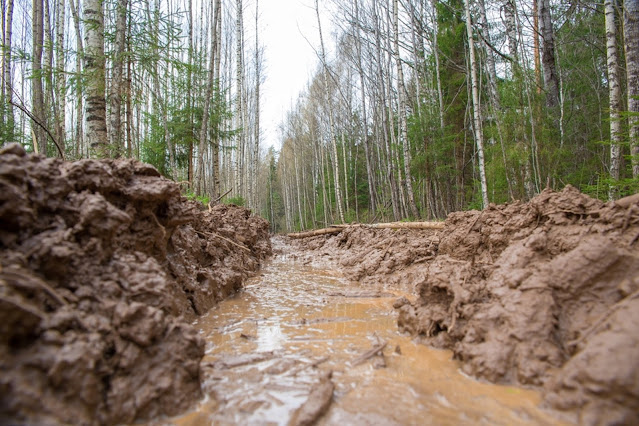There’s something magical about getting caught in the rain, but the expression means something different when you’re riding an ATV. If you’re not careful, getting around can turn into a slip-and-slide. The grounds at your local off-roading park will turn to mush in minutes, leaving you soaked in mud. Regardless of whether you like getting caught in the rain, the weather can change on a dime, so it never hurts to be prepared. Use these safety riding tips to make it through the storm.
1. Use the Proper ATV Rain Riding Gear
You might need to upgrade your riding outfit – even if you don’t mind getting wet. Learn about riding gear for ATV enthusiasts if you need to refresh your memory.
Wear a waterproof outer layer that won’t absorb water when it's raining. Pay attention to the temperature to see how many layers you need to stay warm.
Some riders will throw on a one-piece rain suit over their regular gear. Just make sure it doesn’t limit your range of movement. You can also wear a waterproof jacket and pants to keep things close to the skin. The gloves should be waterproof with ribbed palms and fingers for a reinforced grip. Tuck the legs of your pants into your waterproof boots and your sleeves into your gloves to create a mud-proof seal.
If you have a half-face helmet or skullcap, now’s the time to switch to a full-face helmet. It offers more head protection while keeping you warm. The latest models come with anti-fog visors to help you see. You can wear a waterproof face mask and goggles with a half-face. Just make sure the water won’t slip through the cracks.
2. Stay Connected
Coordinating with your fellow riders is hard enough, even when it’s not raining. You will have trouble hearing each other over the pitter-patter of the droplets hitting the ground. All the water falling from the sky will limit how far you can see.
Pair your helmet with an off-road communication headset to communicate wirelessly on the trail. The device mounts onto your helmet, so all you have to do is speak into the receiver to keep the conversation going. Use the device to check in on each other. If someone can’t see or loses control of their ATV, they can quickly tell the other person to stop or slow down.
3. Prep Your Vehicle
Some riders meticulously choose their gear only to forget to secure their bike. Your ATV runs on electricity, which of course, isn’t ideal for rainy conditions. Look over the exterior for exposed wires, ports and leaks that could fry the battery. The entire vehicle should be waterproofed. Submerging the exhaust in water will also damage your ATV. Consider adding a duct to the exhaust to bring it up to waist height, commonly known as snorkeling.
Too much mud can leave you stranded if your tires can’t get a grip. Even the thickest tread patterns will eventually clog with mud, bringing the vehicle to a halt. Bring along a winch or towing kit to get the ATV moving again. If you don’t have a tree or another rider to pull you out, use an ice climbing anchor or dig-in anchor to find a secure spot in the terrain.
4. Steer Clear of the Water
If the ground is covered in water, you won’t know where your tires meet the ground. Everything will be slick, making it harder to stop. The tires might lose traction, which can lead to hydroplaning. Reduce your speed for a steady ride. Avoid making sudden moves, and keep your body balanced and upright to quickly steady the vehicle when things get bumpy. Give yourself plenty of time to stop and keep away from obstacles.
Deep trenches of mud and water can damage the engine. Wait until you are clear of the water before turning off the vehicle.
5. Know When to Call It
Some of us dream of capturing that perfect mud-soaked pic, but there’s no point in riding if you can’t get where you’re going. You shouldn’t be out in the rain if you’re still getting used to riding.
Pull over and wipe off your gear if the mud blocks your field of view. Bring along spare rags to clear away debris in an emergency.
Heavy rainstorms are your cue to pack up and go home. Too much water increases the risk of mudslides. It’s never safe to ride on icy roads. Getting wet in cold weather also increases your risk of frostbite.
Navigate Rainy Terrain Safely
The rain usually makes ATVing more complicated. If you love getting wet and making a mess in the mud, wear the proper gear and avoid taking unnecessary risks to stay safe. You will have more fun knowing you have everything you need to get home, so your adventures can live in infamy.













0 Comments